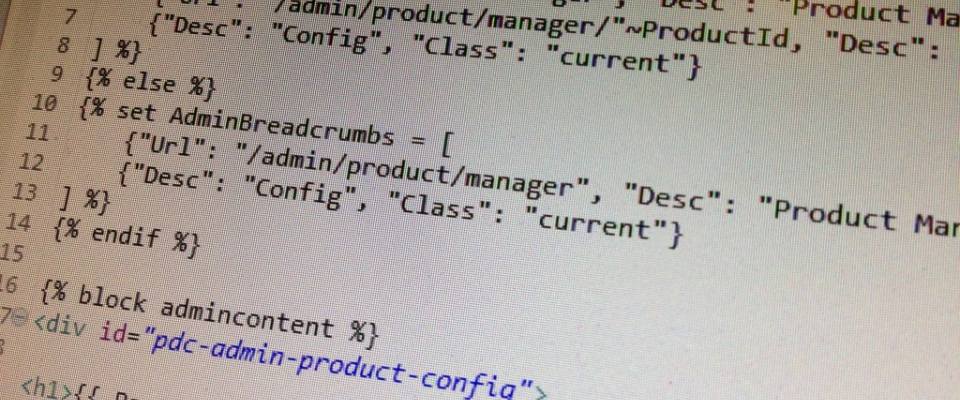In this example we show how to save anda manage an array inside a DB
When working with databases, sometimes it is necessary to store an array in a MySQL field. Unfortunately, there is no way to directly pass in an array as a parameter. Storing these data structures is a bit more complex, but by no means hard or impossible.
To convert any array (or any object) into a string using PHP, call the serialize function:
$array = array( 1, 2, 3 );
$string = serialize( $array );
echo $string;
$string will now hold a string version of the array. The output of the above code is as follows:
a:3:{i:0;i:1;i:1;i:2;i:2;i:3;}
To convert back from the string to the array, use unserialize:
// $array will contain ( 1, 2, 3 )
$array = unserialize( $string );
Now let’s try serializing an array of 200 randomly generated integers from 1 to 1000:
$array = array(); for( $i = 0; $i < 200; $i++ ) $array[] = mt_rand( 1, 1000 ); $string = serialize( $array ); echo $string;
This outputs something like:
a:200:{i:0;i:465;i:1;i:202;i:2;i:9;i:3;i:448;i:4;i:887;i:5;i:844;i:6;i:230;i:7;i:785;i:8;i:892;i:9;i:949;i:10;i:864;i:11;i:29;i:12;i:239;i:13;i:521;i:14;i:632;i:15;i:115;i:16;i:903;i:17;i:331;i:18;i:732;i:19;i:192;i:20;i:487;i:21;i:297;i:22;i:1000;i:23;i:674;i:24;i:301;i:25;i:208;i:26;i:819;i:27;i:690;i:28;i:906;i:29;i:544;i:30;i:316;i:31;i:932;i:32;i:458;i:33;i:64;i:34;i:268;i:35;i:590;i:36;i:80;i:37;i:375;i:38;i:837;i:39;i:928;i:40;i:209;i:41;i:880;i:42;i:60;i:43;i:98;i:44;i:395;i:45;i:880;i:46;i:336;i:47;i:183;i:48;i:321;i:49;i:167;i:50;i:917;i:51;i:423;i:52;i:882;i:53;i:768;i:54;i:415;i:55;i:728;i:56;i:431;i:57;i:540;i:58;i:72;i:59;i:338;i:60;i:431;i:61;i:669;i:62;i:234;i:63;i:699;i:64;i:983;i:65;i:602;i:66;i:348;i:67;i:995;i:68;i:772;i:69;i:337;i:70;i:113;i:71;i:644;i:72;i:209;i:73;i:587;i:74;i:822;i:75;i:135;i:76;i:269;i:77;i:111;i:78;i:406;i:79;i:364;i:80;i:613;i:81;i:522;i:82;i:621;i:83;i:789;i:84;i:195;i:85;i:15;i:86;i:674;i:87;i:916;i:88;i:186;i:89;i:70;i:90;i:59;i:91;i:911;i:92;i:242;i:93;i:270;i:94;i:903;i:95;i:553;i:96;i:166;i:97;i:201;i:98;i:250;i:99;i:683;i:100;i:801;i:101;i:691;i:102;i:602;i:103;i:862;i:104;i:357;i:105;i:872;i:106;i:105;i:107;i:86;i:108;i:496;i:109;i:208;i:110;i:349;i:111;i:69;i:112;i:938;i:113;i:500;i:114;i:961;i:115;i:437;i:116;i:446;i:117;i:16;i:118;i:782;i:119;i:268;i:120;i:296;i:121;i:341;i:122;i:343;i:123;i:160;i:124;i:247;i:125;i:610;i:126;i:600;i:127;i:962;i:128;i:224;i:129;i:659;i:130;i:951;i:131;i:124;i:132;i:937;i:133;i:819;i:134;i:684;i:135;i:930;i:136;i:104;i:137;i:493;i:138;i:568;i:139;i:290;i:140;i:333;i:141;i:626;i:142;i:160;i:143;i:80;i:144;i:278;i:145;i:840;i:146;i:942;i:147;i:141;i:148;i:28;i:149;i:69;i:150;i:241;i:151;i:724;i:152;i:386;i:153;i:209;i:154;i:933;i:155;i:281;i:156;i:410;i:157;i:397;i:158;i:360;i:159;i:337;i:160;i:29;i:161;i:321;i:162;i:543;i:163;i:642;i:164;i:943;i:165;i:273;i:166;i:505;i:167;i:856;i:168;i:860;i:169;i:67;i:170;i:879;i:171;i:735;i:172;i:964;i:173;i:858;i:174;i:965;i:175;i:984;i:176;i:821;i:177;i:540;i:178;i:857;i:179;i:363;i:180;i:588;i:181;i:707;i:182;i:588;i:183;i:540;i:184;i:380;i:185;i:35;i:186;i:52;i:187;i:926;i:188;i:686;i:189;i:833;i:190;i:941;i:191;i:385;i:192;i:730;i:193;i:743;i:194;i:815;i:195;i:497;i:196;i:567;i:197;i:811;i:198;i:339;i:199;i:144;}
These strings can easily be stored in a database and unserialized when the data is accessed. Often times, base64_encode is used in conjunction with serialize when storing arrays:
$string = base64_encode( serialize( $array ) );
The encrypted string can then be restored to an array by using base64_decode:
$array = unserialize( base64_decode( $string ) );
Unfortunately, these strings can grow to be quite large. To counter the size, you may want to use gzcompress to apply gzip compression and significantly reduce the size:
$smallString = gzcompress( $string );
Note that gzip compression can be undone with gzuncompress.
That’s really all there is to it. Now you can easily store an array of information in a database!

